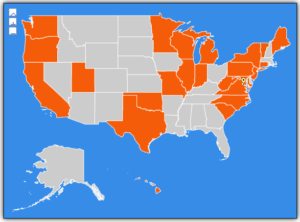E-Waste and Earth: How to Recycle Technology – Xidax
Every day, we become more aware of our lives’ impact on the environment. Science has been on the job for decades and we find new ways to help as individuals all the time: driving less, donations, proper waste disposal and more go into the task.
Electronics can be a frustrating piece of this equation. When we finally get to properly wiping the device and getting rid of it, many times the trash can is the most likely destination. What if I told you there is a better option for your e-waste?
Today we are more aware than ever of the environmental impact of things like microplastics and carbon footprints. Many places have adopted policies to reduce single-use plastics, and atmospheric carbon mining is only beginning to make an impact. You can make a difference by recycling your electronics.
What is e-waste
E-waste is a loose term to describe end-of-life consumer electronics that generally fall into the entertainment or communications categories. Typically things like appliances are not counted, though that is up for debate in many areas. This type of waste can normally be reused, refurbished, or recycled. Items like TVs, cellphones, computers, and stereos are common electronics that are thrown out after they are replaced.
The reason for an electronic’s replacement is the most important part of the e-waste conversation. Obsolete or dead electronics are a problem, but technology has been evolving at lightning speed which means people replace their electronics to stay on top of trends. For example, some people replace their phones every time a new one is released. This rate of replacement leaves us with a truly astounding amount of tech that could be reused to reduce mining efforts and create the next-gen without the environmental cost.
There is a sneaky category of e-waste that we need to remember exists; general electronics. Things like smart lights, that box of random electrical cords, medical equipment, massage chairs, heating pads, standard and mini vacuums, remotes… the list goes on. These items also need to be properly recycled in order to keep the hazardous materials inside from adding to the health problems we face from the materials that already exist in our landfills.
How is e-waste recycled?
E-waste is dealt with in the home country and through export to other countries. The electronics are dismantled manually as far as possible before the harmful materials are removed. Then there is an automated process to pull apart the remaining pieces. The last step is for the parts to be put through the proper treatment, allowing them to be reused as recycled material.
The largest hurdle with e-waste is the collection. Not enough people are informed on how to recycle their electronics. In the US, you can use services like Earth911 and CTA.Tech to find where you can recycle the old or outdated electronics in your home. You can also use resell programs or donate the electronics. You can also sell it back to many manufacturers for them to recycle. Amazon, Apple, Best Buy, and Sprint all offer programs for consumers to recycle e-waste.
Impact of tech waste

According to the WorldLoop organization; for every ton of e-waste collected and recycled we can avoid 1.44 tons of CO2 emissions. That’s about 4500 cell phones.
There are some important factors that play into the proper end-of-life care of a dead electronic. There are hazardous materials in most electronics such as lead, mercury, and cadmium that make these items unsafe to be thrown into a landfill. These materials can be dangerous enough that half of the United States and 78 countries have legislation to deal with e-waste legislation, policies, and regulation.
The dangerous materials are not the only aspect of e-waste recycling. By recycling old electronics we can prevent the manufacturing of new parts, saving the impact of that entire process.
Over a thousand tons of carbon emissions are saved by avoiding the use of virgin materials in new electronics. According to the EPA, 2.4 million tons of electronics are disposed of every year. As of 2020, it was estimated that internationally 15%-20% of disposed electronics are recycled. In the US about 25% of disposed electronics are recycled.
Every day we interact with items that will be outdone by the next generation of technology. Which is quickly evolving to provide new features and experiences for users. At Xidax, all the parts we have returned or damaged are recycled so they can be used again in the future.
If you are ready for your next generation in technology make sure you know how to recycle your hardware, Xidax will be there to help you stay on the top of your game! Until, game on!











